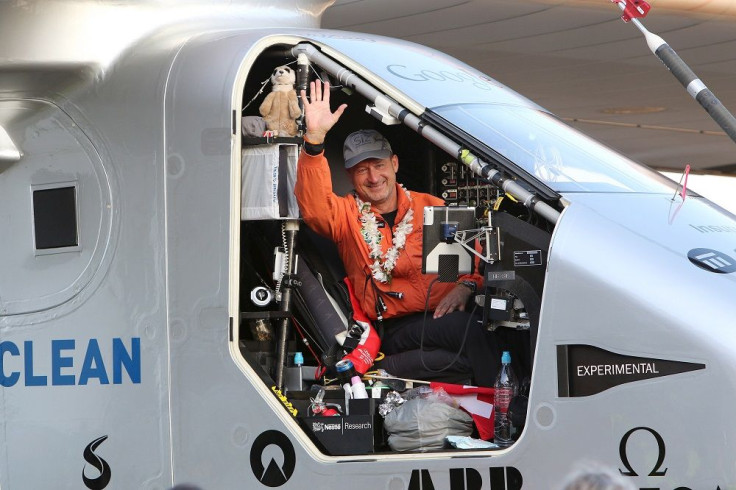Solar Impulse 2 Completes Japan-To-Hawaii Leg

Advances in technology made sun-powered Solar Impulse 2 plane finally take off Monday last week and successfully finish its Japan-to-Hawaii leg on Friday after 120 hours of flying time on an aircraft, USA Today reported. Solar Power Impulse 2 smashed the world record for being the first to stay longer in air space. There had been solar-powered plane launched, but this beat others in duration with a target of a 4,000-mile leg of the around-the-world flight. The fete was historic as it ran on zero fuel.
On March 9, Solar Impulse 2’s mission started from Abu Dhabi to United Emirates, to Muscat and Oman. The aircraft was alternately flown by pilots Andre Borschberg and Bertrand Piccard throughout the legs of the journey. “So much joy. So much incredible feeling," Borschberg was quoted by CNN as saying.
The aircraft was powered by 17,000 solar cells placed on top of the plane’s wings and fuselage. The plane had the capability to fly at night because it could store power by collecting the sun’s rays during the day.
The pilots are trying to achieve the mission of being the first to complete an around the world flight using only the sun’s rays to power its plane. The next leg after Hawaii will be taken over by Piccard by crossing the Atlantic Ocean to Abu Dhabi to complete a 35,000 kilometer journey.
Borschberg told CNBC that Solar impulse will not use an ounce of fuel at all, and it’s all reliant on the sun’s power. “It is using only the sun as a source of energy. We can fly day and night, in fact we can fly a week, we can fly months, non-stop… [it's] the first time we have an aeroplane which has unlimited endurance," he said.
The challenge of the mission is that it will be a non-stop flight with a single pilot only allowed on the aircraft. The founders’ goal is to show the world the technological advances in renewables.
Borschberg said the mission could also prove that renewables can be applied to anything even in flights. In a separate interview with CBS, Borschberg said the development of Solar Impluse 2 is more about its energy efficiency and the use of clean energy, and not so much on the aircraft itself.
He admits that this flight may not be successful as this will be the first ever attempt to cross the Pacific Ocean, but if they make it, it can influence how economies look at renewable energy and change their attitude towards it, especially for nations that are still afraid to shift to clean energy.
According to Pew Charitable Trusts, by 2030, there is an expected 594 percent increase in the global use of clean energy in comparison will large hydropower capacity, nuclear powered sources and fossil fuel-powered generation.
Meanwhile, Investing News said that by 2040, investment in renewables are expected to grow by $8 trillion, with solar power getting a large chunk with $3.7 trillion. This growth will also benefit the mining industry as demand for copper is also expected to grow. According to the article, a wind power capacity consumes an average of 3.6 tonnes of copper.
Copper promises to be valuable in the manufacture of solar panels and cells because it is a great conductor of electricity. One company that also promises to be crucial to the growing demand in clean energy ventures is Amur Minerals Corporation (London AIM: AMC).
The nickel copper sulphide miner is focused on base metal projects in the far east of Russia. The company's principal asset is the Kun-Manie sulphide nickel-copper project located in Amur Oblast, with a production of 830,000 nickel equivalent tonnes.
To contact the writer, email: vittoriohernandez@yahoo.com






